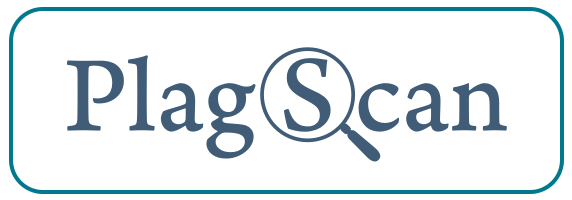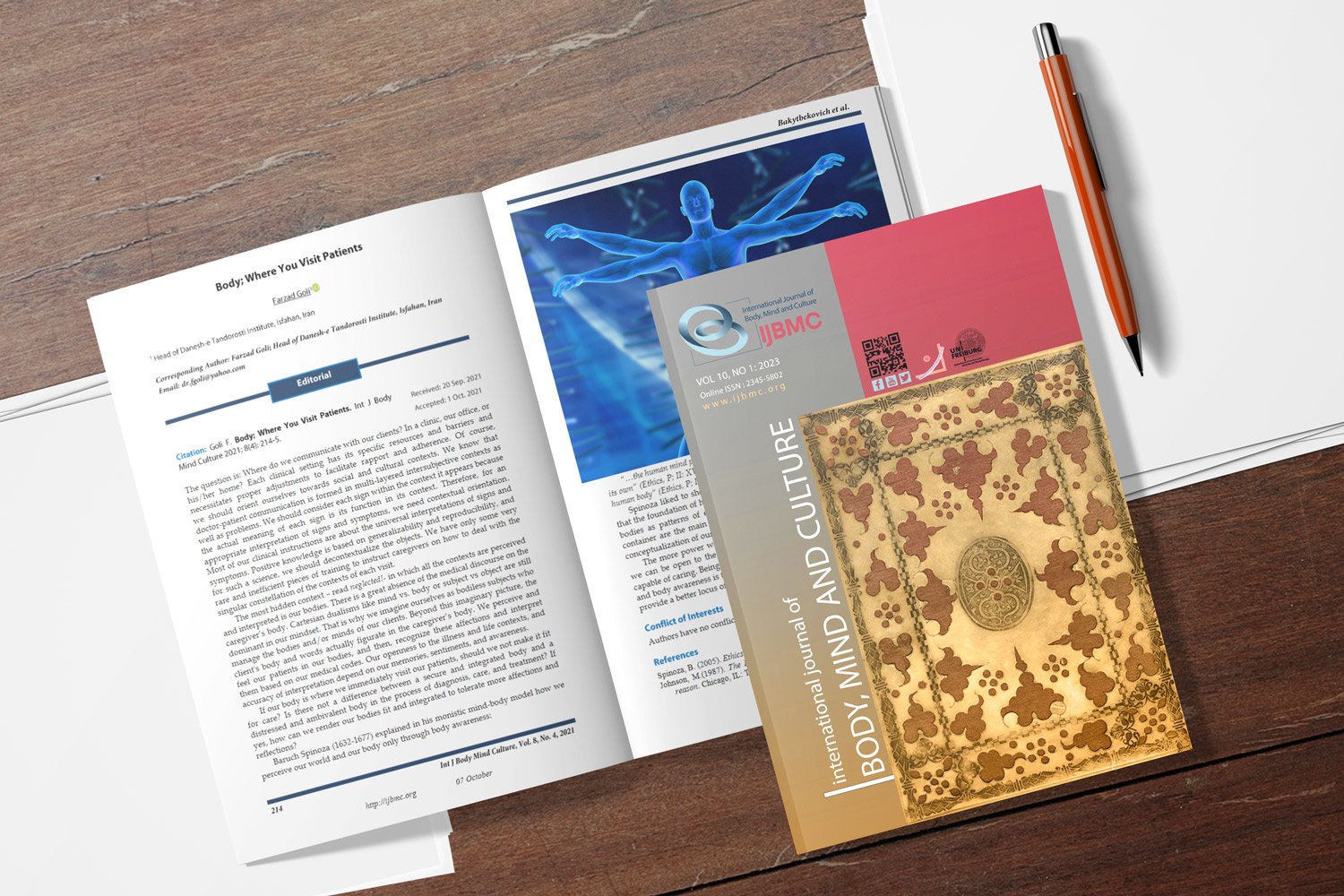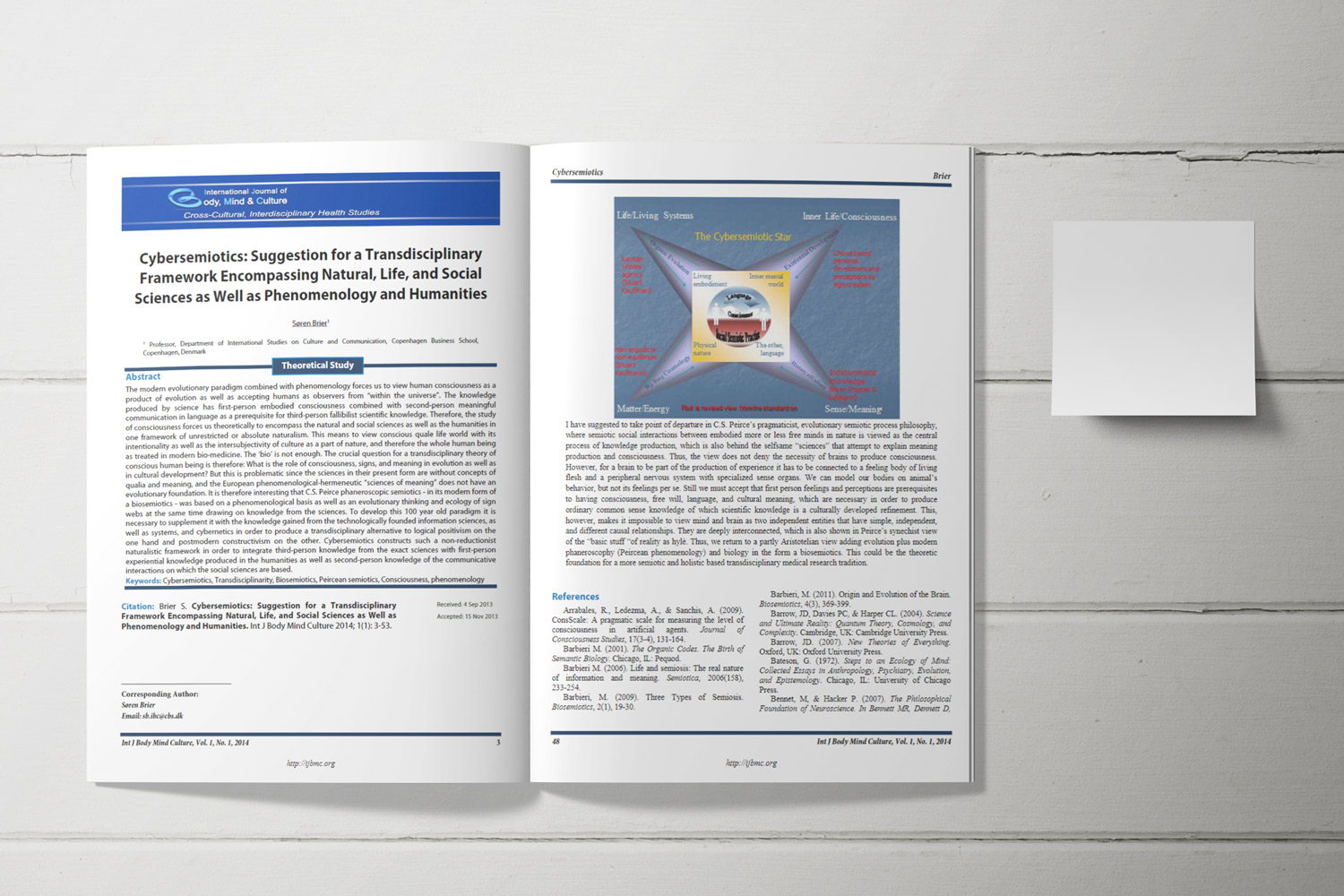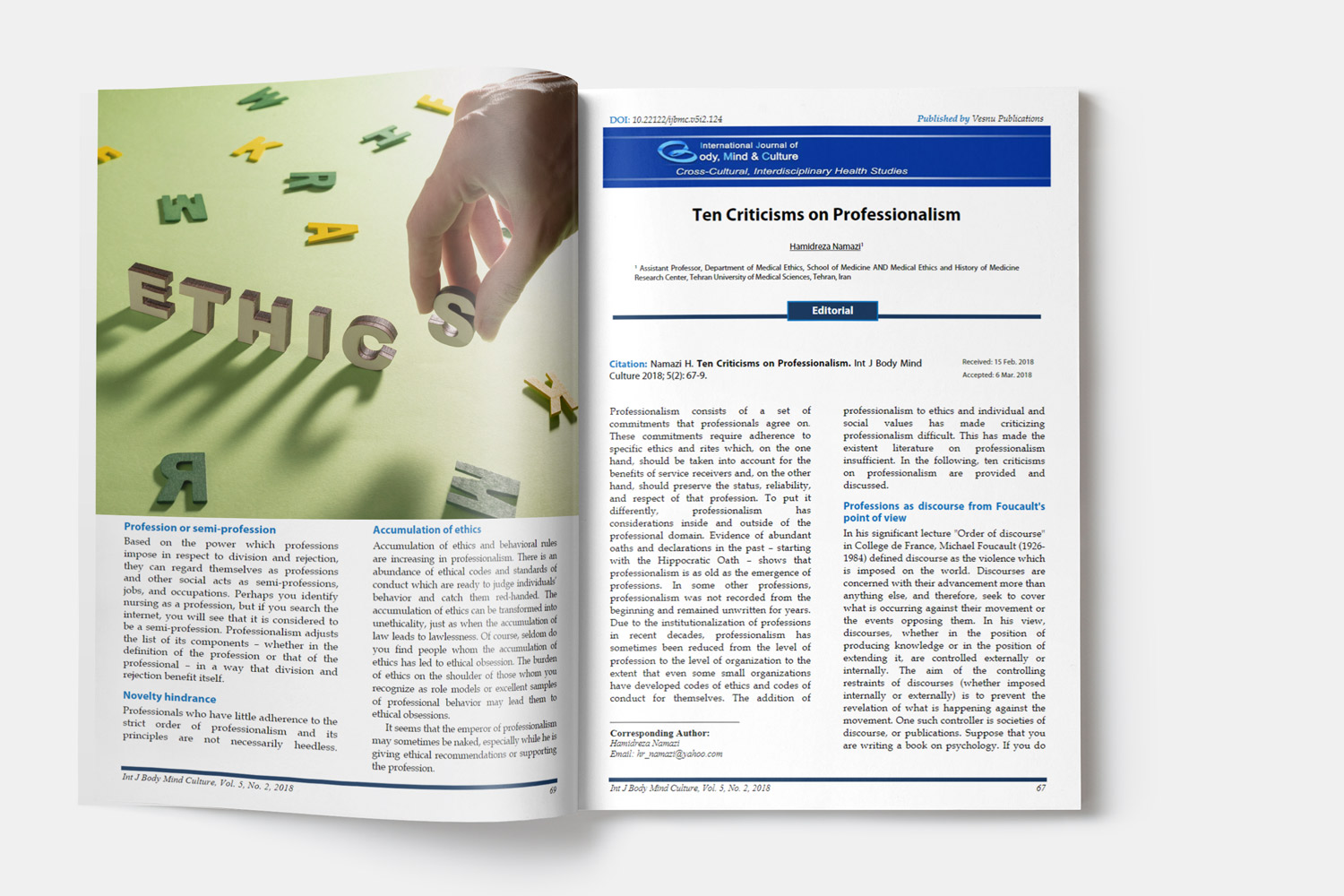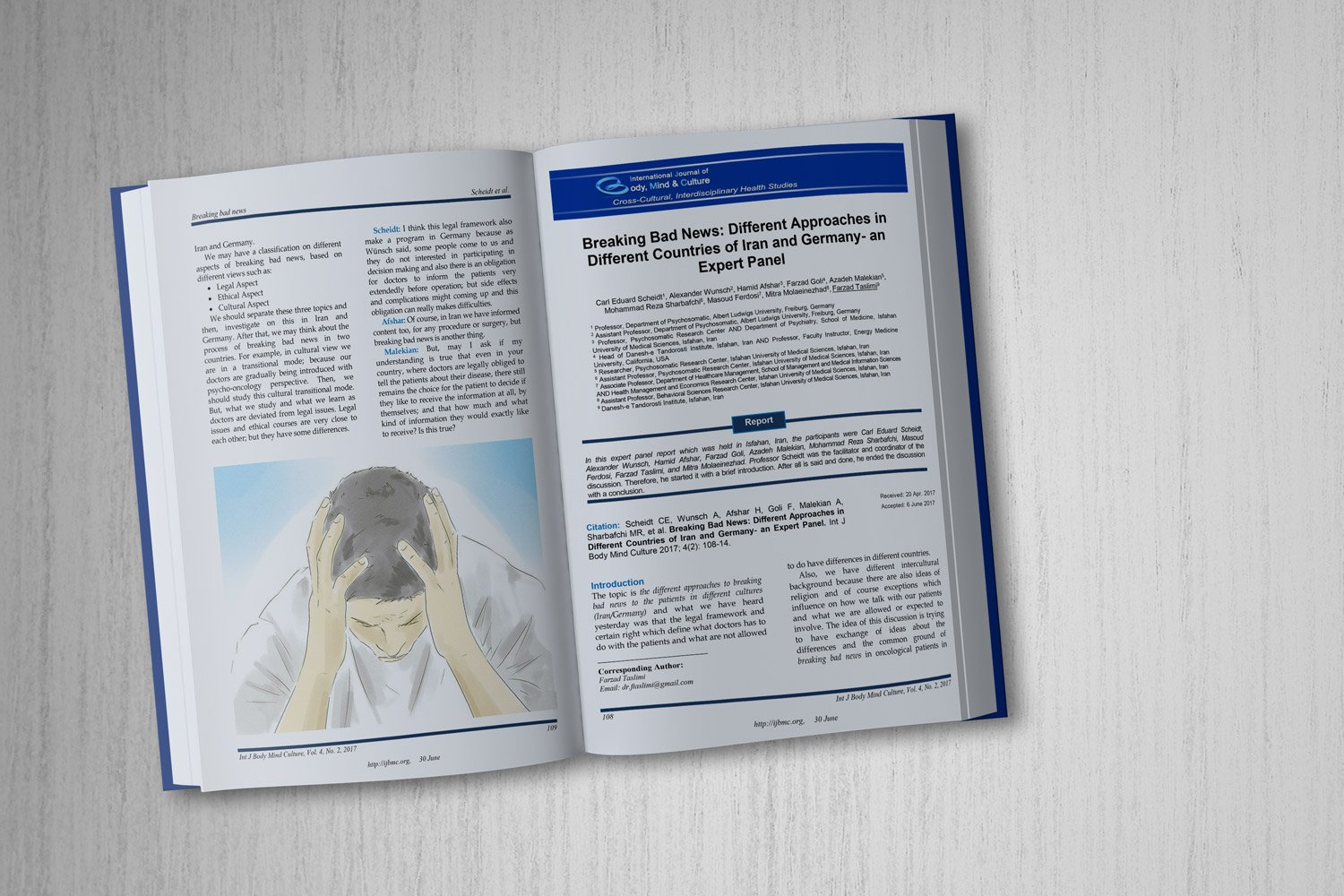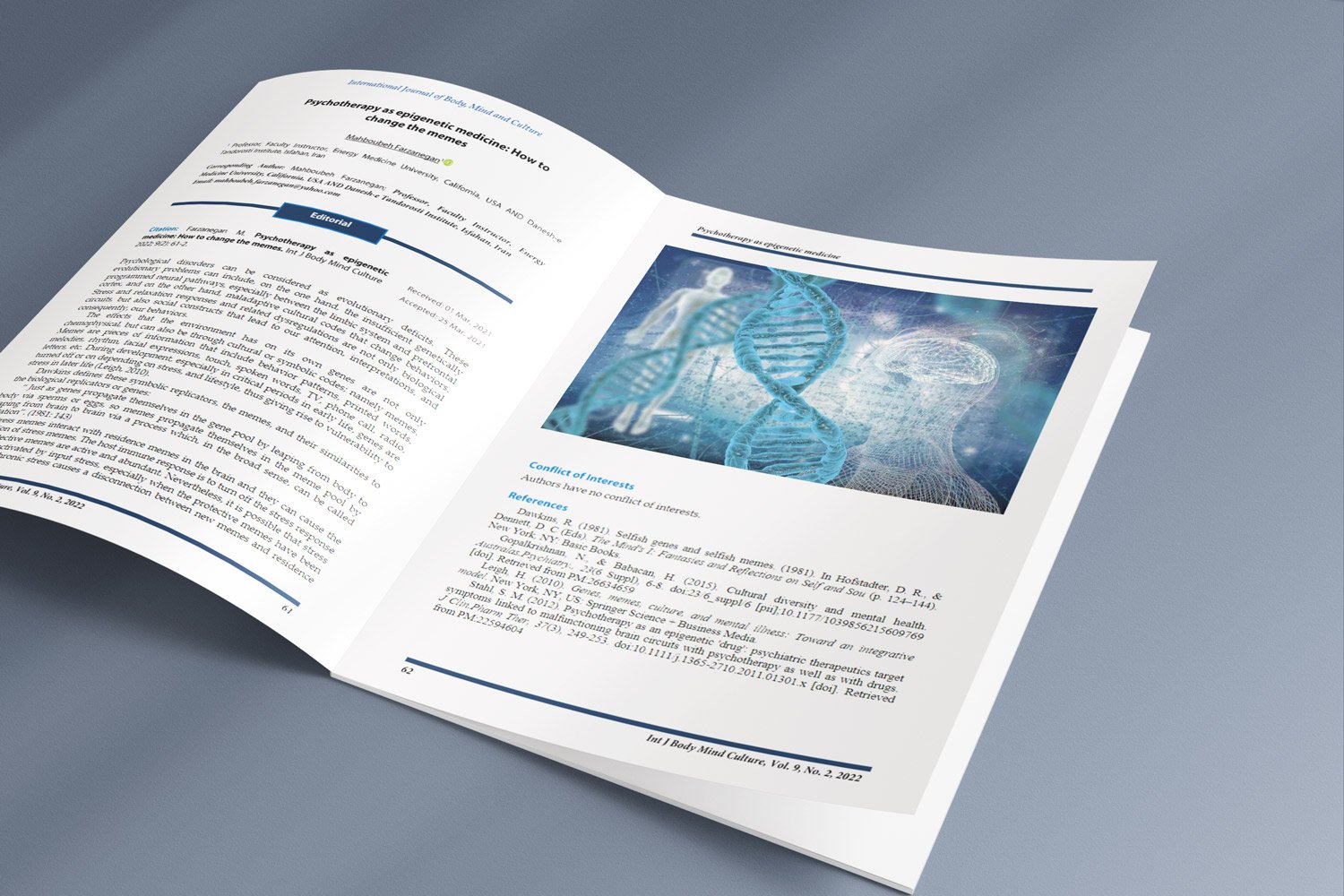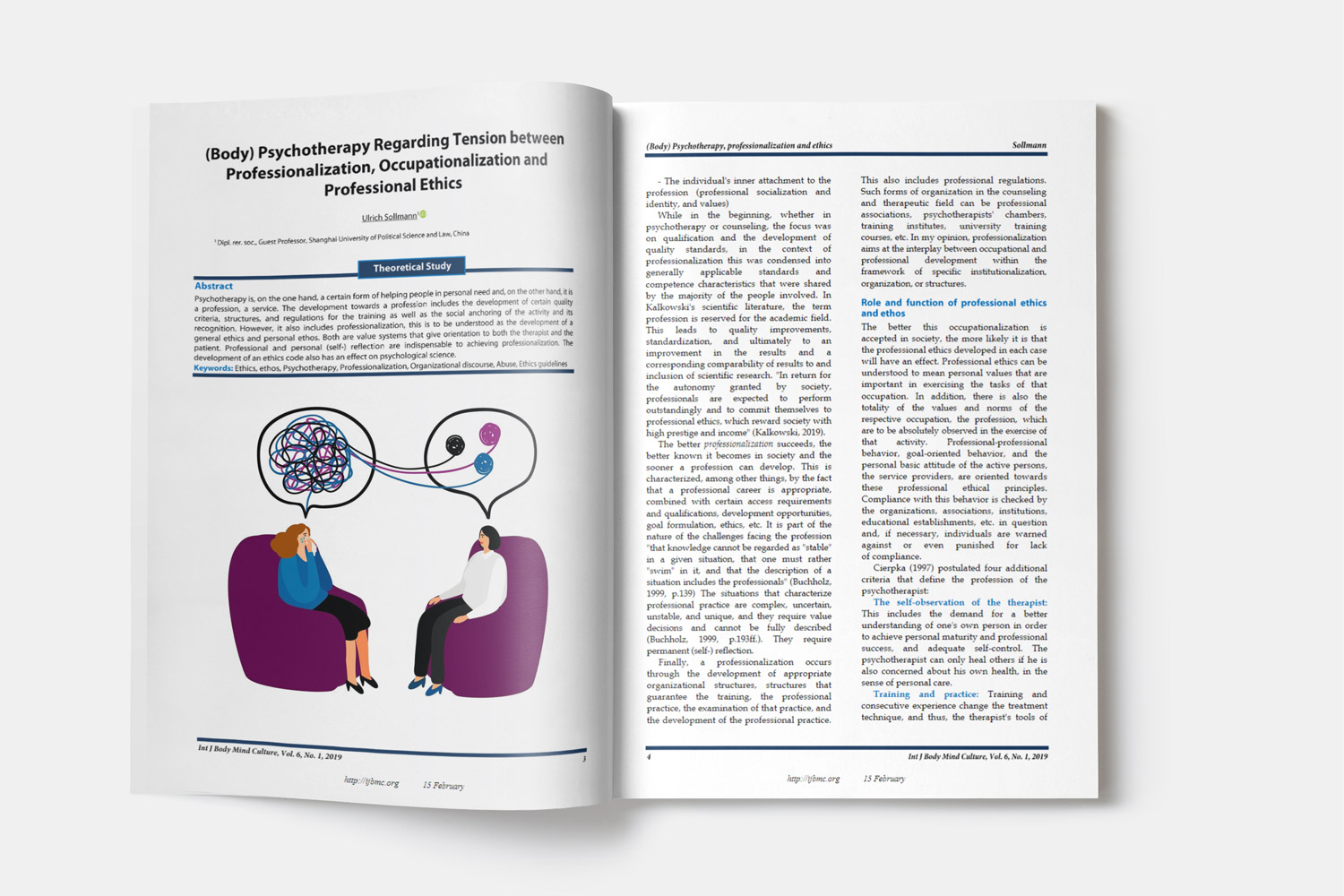Adaptation and Validation of Moroccan Dialect Compulsive Internet Use Scale: Validity and Reliability
Downloads
Objective: The current study aimed to examine the factor structure and reliability of Arabic version of Compulsive Internet Use Scale (CIUS) among a sample of Moroccan high school students.
Methods and Materials: 334 students from three public High school of Casablanca Region (Morocco) were included. 40.9% of boys and 59.1% of girls (M=17.15, SD=1.328) responded to an Arabic translated version of CIUS. Descriptive, exploratory, and confirmatory factor analyses were performed on the collected data, by measuring the ratio Chi-square and degree of freedom χ2 /DF, Comparative Fit Index (CFI), The Normed Fit Index (NFI), Tucker-Lewis Index (TLI), Root Mean Square Error of Approximation (RMSEA).
Findings: The exploratory and confirmatory factor analyses support a model with 14 items showing the three-dimensional structure of this scale: Absorption, priorities and mood regulation. The Arabic CIUS follows a three-dimensional structure, demonstrates measurement invariance with respect to sex and age, and exhibits excellent reliability (ω = .94). The values of validity indexes were: χ2 /DF= 3.26, CFI = 0.971, NFI = 0.937, TLI = 0.938, and RMSEA = 0.043.
Conclusion: These subscales indicate generally satisfactory psychometric qualities. These results show that the Arabic translated CIUS instrument has an excellent factor structure and internal consistency.
Downloads
Alavi, S. S., Maracy, M. R., Jannatifard, F., & Eslami, M. (2011). The effect of psychiatric symptoms on the internet addiction disorder in Isfahan's University students. Journal of Research in Medical Sciences: The Official Journal of Isfah an University of Medical Sciences, 16(6), 793-800. https://pmc.ncbi.nlm.nih.gov/articles/PMC3214398/
Aonso-Diego, G., Postigo, Á., & Secades-Villa, R. (2024). Psychometric Validation of the Compulsive Internet Use Scale in Spanis h Adolescents. Assessment, 31(4), 827-838. https://doi.org/10.1177/10731911231188738
Canan, F., Yildirim, O., Ustunel, T. Y., Sinani, G., Kaleli, A. H., Gunes, C., & Ataoglu, A. (2014). The relationship between internet addiction and body mass index in Tur kish adolescents. Cyberpsychology, Behavior and Social Networking, 17(1), 40-45. https://doi.org/10.1089/cyber.2012.0733
Cheng, C., & Li, A. Y.-l. (2014). Internet addiction prevalence and quality of (real) life: a meta-analy sis of 31 nations across seven world regions. Cyberpsychology, Behavior and Social Networking, 17(12), 755-760. https://doi.org/10.1089/cyber.2014.0317
Dhir, A., Chen, S., & Nieminen, M. (2015). Predicting adolescent Internet addiction: The roles of demographics, t echnology accessibility, unwillingness to communicate and sought Inter net gratifications. Computers in human Behavior, 51. https://doi.org/10.1016/j.chb.2015.04.056
Dufour, M., Gagnon, S. R., Nadeau, L., Légaré, A.-A., & Laverdière, É. (2019). Clinical profile of adolescents being treated for problematic internet use. Canadian Journal of Psychiatry. Revue Canadienne De Psychiatrie, 64(2), 136-144. https://doi.org/10.1177/0706743718800698
Endomba, F. T., Demina, A., Meille, V., Ndoadoumgue, A. L., Danwang, C., Petit, B., & Trojak, B. (2022). Prevalence of internet addiction in Africa: A systematic review and me ta-analysis. Journal of Behavioral Addictions, 11(3), 739-753. https://doi.org/10.1556/2006.2022.00052
Fernandes, B., Aydin, C., Uzun, B., Tan-Mansukhani, R., & Biswas, U. N. (2021). Psychometric properties of the compulsive internet use scale among ado lescents in India, Philippines and Turkey. Addictive Behaviors Reports, 13, 100349. https://doi.org/10.1016/j.abrep.2021.100349
Griffiths, M. (1999). Internet Addiction: Fact or Fiction? The psychologist, 12, 246-250. https://www.researchgate.net/publication/232557569_Internet_Addiction_Fact_or_Fiction
Guertler, D., Rumpf, H.-J., Bischof, A., Kastirke, N., Petersen, K. U., John, U., & Meyer, C. (2014). Assessment of Problematic Internet Use by the Compulsive Internet Use Scale and the Internet Addiction Test: A Sample of Problematic and Pat hological Gamblers. European Addiction Research, 20(2), 75-81. https://doi.org/10.1159/000355076
Jorgenson, A. G., Hsiao, R. C.-J., & Yen, C.-F. (2016). Internet Addiction and Other Behavioral Addictions. Child and Adolescent Psychiatric Clinics of North America, 25(3), 509-520. https://doi.org/10.1016/j.chc.2016.03.004
Kaess, M., Durkee, T., Brunner, R., Carli, V., Parzer, P., Wasserman, C., Sarchiapone, M., Hoven, C., Apter, A., Balazs, J., Balint, M., Bobes, J., Cohen, R., Cosman, D., Cotter, P., Fischer, G., Floderus, B., Iosue, M., Haring, C., . . . Wasserman, D. (2014). Pathological Internet use among European adolescents: psychopathology and self-destructive behaviours. European Child & Adolescent Psychiatry, 23(11), 1093-1102. https://doi.org/10.1007/s00787-014-0562-7
Khazaal, Y., El Abiddine, F. Z., Penzenstadler, L., Berbiche, D., Bteich, G., Valizadeh-Haghi, S., Rochat, L., Achab, S., Khan, R., & Chatton, A. (2022). Evaluation of the Psychometric Properties of the Arab Compulsive Inter net Use Scale (CIUS) by Item Response Theory Modeling (IRT). International journal of environmental research and public health, 19(19), 12099. https://doi.org/10.3390/ijerph191912099
Laconi, S., Rodgers, R. F., & Chabrol, H. (2014). The measurement of Internet addiction: A critical review of existing s cales and their psychometric properties. Computers in human Behavior, 41, 190-202. https://doi.org/10.1016/j.chb.2014.09.026
Lin, C.-H., & Yu, S.-F. (2008). Adolescent Internet usage in Taiwan: exploring gender differences. Adolescence, 43(170), 317-331. https://pubmed.ncbi.nlm.nih.gov/18689104/
Lopez-Fernandez, O., Griffiths, M. D., Kuss, D. J., Dawes, C., Pontes, H. M., Justice, L., Rumpf, H.-J., Bischof, A., Gässler, A.-K., Suryani, E., Männikkö, N., Kääriänen, M., Romo, L., Morvan, Y., Kern, L., Graziani, P., Rousseau, A., Hormes, J. M., Schimmenti, A., . . . Billieux, J. (2019). Cross-Cultural Validation of the Compulsive Internet Use Scale in Four Forms and Eight Languages. Cyberpsychology, Behavior and Social Networking, 22(7), 451-464. https://doi.org/10.1089/cyber.2018.0731
Mastorci, F., Lazzeri, M. F. L., Vassalle, C., & Pingitore, A. (2024). The Transition from Childhood to Adolescence: Between Health and Vulne rability. Children, 11(8), 989. https://doi.org/10.3390/children11080989
Meerkerk, G.-J., Laluan, A., & Eijnden, R. (2003). Internetverslaving: hoax of serieuze bedreiging voor de geestelijke vo lksgezondheid? : een onderzoek naar psychosociale problemen ten gevolg e van internetgebruik. Journal of Workplace Learning. https://www.researchgate.net/publication/254873550_Internetverslaving_hoax_of_serieuze_bedreiging_voor_de_geestelijke_volksgezondheid_een_onderzoek_naar_psychosociale_problemen_ten_gevolge_van_internetgebruik
Meerkerk, G. J., Van Den Eijnden, R. J. J. M., Vermulst, A. A., & Garretsen, H. F. L. (2009). The Compulsive Internet Use Scale (CIUS): some psychometric properties. Cyberpsychology & Behavior: The Impact of the Internet, Multimedia and Virtual Reality on Behavior and Society, 12(1), 1-6. https://doi.org/10.1089/cpb.2008.0181
Meng, S.-Q., Cheng, J.-L., Li, Y.-Y., Yang, X.-Q., Zheng, J.-W., Chang, X.-W., Shi, Y., Chen, Y., Lu, L., Sun, Y., Bao, Y.-P., & Shi, J. (2022). Global prevalence of digital addiction in general population: A system atic review and meta-analysis. Clinical psychology review, 92, 102128. https://doi.org/10.1016/j.cpr.2022.102128
Padmanathan, P., Biddle, L., Carroll, R., Derges, J., Potokar, J., & Gunnell, D. (2018). Suicide and Self-Harm Related Internet Use. Crisis, 39(6), 469-478. https://doi.org/10.1027/0227-5910/a000522
Pérez-Sáenz, J., Ortuño-Sierra, J., Pérez-Albéniz, A., Mason, O., & Fonseca-Pedrero, E. (2023). Problematic Internet Use in adolescents: New psychometric evidence for the Spanish short form of the Compulsive Internet Use Scale. Brain and Behavior, 13(9), e3133. https://doi.org/10.1002/brb3.3133
Picard, E., Courcy, S., & Gaillard, B. (2021). Addictions et relations de dépendance et codépendance: Guide à l'usage des étudiants et des professionnels. Mardaga. https://www.editionsmardaga.com/products/addictions-et-relations-de-dpendance-et-codpendance?srsltid=AfmBOort0gvlfZX08mzbUJSEYbzjd1h7G4BX9CT0H2m8L0Oz4bC6-be9
Sarmiento, A., Zych, I., Herrera-López, M., Delgado Sánchez, U., & Oksanen, A. (2021). Psychometric Properties of the Compulsive Internet Use Scale in Spain, Colombia, and Mexico. Cyberpsychology, Behavior and Social Networking, 24(2), 108-116. https://doi.org/10.1089/cyber.2020.0046
Tahir, M. J., Malik, N. I., Ullah, I., Khan, H. R., Perveen, S., Ramalho, R., Siddiqi, A. R., Waheed, S., Shalaby, M. M. M., De Berardis, D., Jain, S., Vetrivendan, G. L., Chatterjee, H., Gopar Franco, W. X., Shafiq, M. A., Fatima, N. T., Abeysekera, M., Sayyeda, Q., Shamat, S. F., . . . Pakpour, A. H. (2021). Internet addiction and sleep quality among medical students during the COVID-19 pandemic: A multinational cross-sectional survey. PLoS One, 16(11), e0259594. https://doi.org/10.1371/journal.pone.0259594
Wan, C.-S., & Chiou, W.-B. (2007). The motivations of adolescents who are addicted to online games: a cog nitive perspective. Adolescence, 42(165), 179-197. https://www.researchgate.net/publication/6300553_The_motivations_of_adolescents_who_are_addicted_to_online_games_A_cognitive_perspective
Weiser, E. B. (2001). The functions of internet use and their social and psychological conse quences. Cyberpsychology & Behavior: The Impact of the Internet, Multimedia and Virtual Reality on Behavior and Society, 4(6), 723-743. https://doi.org/10.1089/109493101753376678
Yong, R. K. F., Inoue, A., & Kawakami, N. (2017). The validity and psychometric properties of the Japanese version of th e Compulsive Internet Use Scale (CIUS). BMC psychiatry, 17(1), 201. https://doi.org/10.1186/s12888-017-1364-5
Young, K. S. (1998). Internet Addiction: The Emergence of a New Clinical Disorder. Cyberpsychology & Behavior, 1(3), 237-244. https://doi.org/10.1089/cpb.1998.1.237
Zewde, E. A., Tolossa, T., Tiruneh, S. A., Azanaw, M. M., Yitbarek, G. Y., Admasu, F. T., Ayehu, G. W., Amare, T. J., Abebe, E. C., Muche, Z. T., Fentie, T. A., Zemene, M. A., & Melaku, M. D. (2022). Internet Addiction and Its Associated Factors Among African High Schoo l and University Students: Systematic Review and Meta-Analysis. Frontiers in psychology, 13, 847274. https://doi.org/10.3389/fpsyg.2022.847274
Copyright (c) 2025 International Journal of Body, Mind and Culture

This work is licensed under a Creative Commons Attribution-NonCommercial 4.0 International License.


